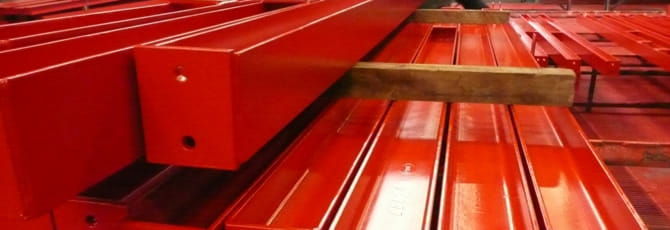Background
Polyaspartic coatings were introduced in the early 1990s by one of the world’s leading chemical companies, Bayer Material Science. This new technology was first employed as a protective steel coating, offering corrosion prevention for bridges and other harsh environment applications. From a technical perspective, the term “polyaspartic” refers to an “aliphatic polyurea”.
Today, the general public is somewhat familiar with polyurea coatings, primarily from their uses in such applications as spray down truck bed liners and tank coatings. As polyaspartics became more prevalent, chemists and formulators naturally realized several key advantages, including the capability to modify the rate of reaction polyaspartic esters experienced once catalyzed with aliphatic polyisocyanites. This discovery marked a breakthrough and opened the door for several new protective coating applications and markets.
For nearly a decade, LATICRETE coatings experts have exclusively developed and manufactured polyaspartic concrete coatings under the license of United States Patents 6,833,424 and 7,169,876.
Polyaspartic Concrete Coatings Facts
What are polyaspartic coatings?
- From a technical perspective, the term “polyaspartic” refers to an “aliphatic polyurea”. Today the general public is somewhat familiar with polyurea coatings, primarily from their uses in such applications as spray down truck bed liners and tank coatings. Polyaspartic coatings are often viewed as a variation or type of a polyurea coating. Today, polyaspartic coatings are widely used in protective resinous concrete floor coating applications.
How are Polyaspartic Concrete Floor Coatings applied?
- Polyaspartic coatings may be applied with a squeegee, seal-coat broom or even a simple 18” long 3/8” nap roller. Common methods include the Dip and Roll Method as well as the Ribbon and Roll method.
Can I apply Polyaspartic Coatings in cold temperatures?
- Yes, depending on the formulation, polyaspartics may be applied in extremely low temperatures below 0º Centigrade.
How long do Polyaspartic Concrete Coatings take to Dry?
- Polyaspartic coatings are designed to exhibit rapid curing capabilities, and may dry in a matter of hours or less. Often these concrete floor coating systems provide for next-day return to service. Rapid cure is one of the primary benefits over traditional epoxy coating technology.
What types of floor coating systems are available with Polyaspartics?
- One of the primary benefits to polyaspartic coatings is the material’s versatility. Standard solid color industrial floor coatings, Seamless Flake and Monolithic Quartz flooring systems are common polyaspartic concrete coating systems. Recently, new decorative floor coating applications such as dye and seal and metallic floor coating systems have been developed with polyaspartic coating technology.
Are Polyaspartic Coatings as durable as Epoxy Coatings?
- Yes, and then some. Based on empirical testing data, polyaspartic coatings offer abrasion resistant capabilities that actually exceed those of typical epoxy systems.
Can Polyaspartic coatings be used outside?
- Yes, most polyaspartics are UV stable and are suitable for exterior applications. Some manufacturers incorporate excessive additives to augment solids content, which diminishes the integrity of the coating and can lead to problems, such as yellowing in the sun. LATICRETE does not use excessive fillers and all SPARTACOTE® Flex polyaspartic concrete coatings are completely UV stable.
What types of environments can Polyaspartic Coatings be applied?
- Generally, any type of an environment where a resinous concrete floor coating is called for, a polyaspartic coating system may be used. This includes heavy traffic industrial and commercial flooring as well as residential garage floor coatings.
Where would one not select a Polyaspartic Coating?
- Polyaspartic coatings are not suitable applications for every type of environment. Avoid using these materials in situations where a breathable concrete sealer is specified. These applications include over exterior stamped concrete, driveways or sidewalks. Polyaspartics are seamless, high performance polymer coatings designed for protection. They will not breathe and can exhibit moisture challenges over time if not used properly.
Who can install Polyaspartic Coatings?
- Polyaspartic coatings systems are high performance materials that should only be installed by a SPARTACOTE® trained concrete coating contractor. LATICRETE® SPARTACOTE® coatings are for professional use only.
Can I use a Polyaspartic Coating over an Epoxy Coating?
- Yes. Polyaspartic coatings exhibit superior inter-coat adhesion with epoxy coatings. For old epoxy floor coatings that are still well adhered to the substrate, an installer can apply a new polyaspartic top-coat over that area. The process for doing so includes first mechanically profiling the existing epoxy floor by sanding it. Following that, excess dust is vacuumed up and the area is wiped with an appropriate solvent or adhesion promotor to clean the surface. The area is them properly prepared for a fresh polyaspartic top-coat.
What do I need to know about installing Polyaspartic Coatings in residential garages?
- View the Consumer’s Guide to Residential Garage Concrete Coatings to read the most common questions and answers.

